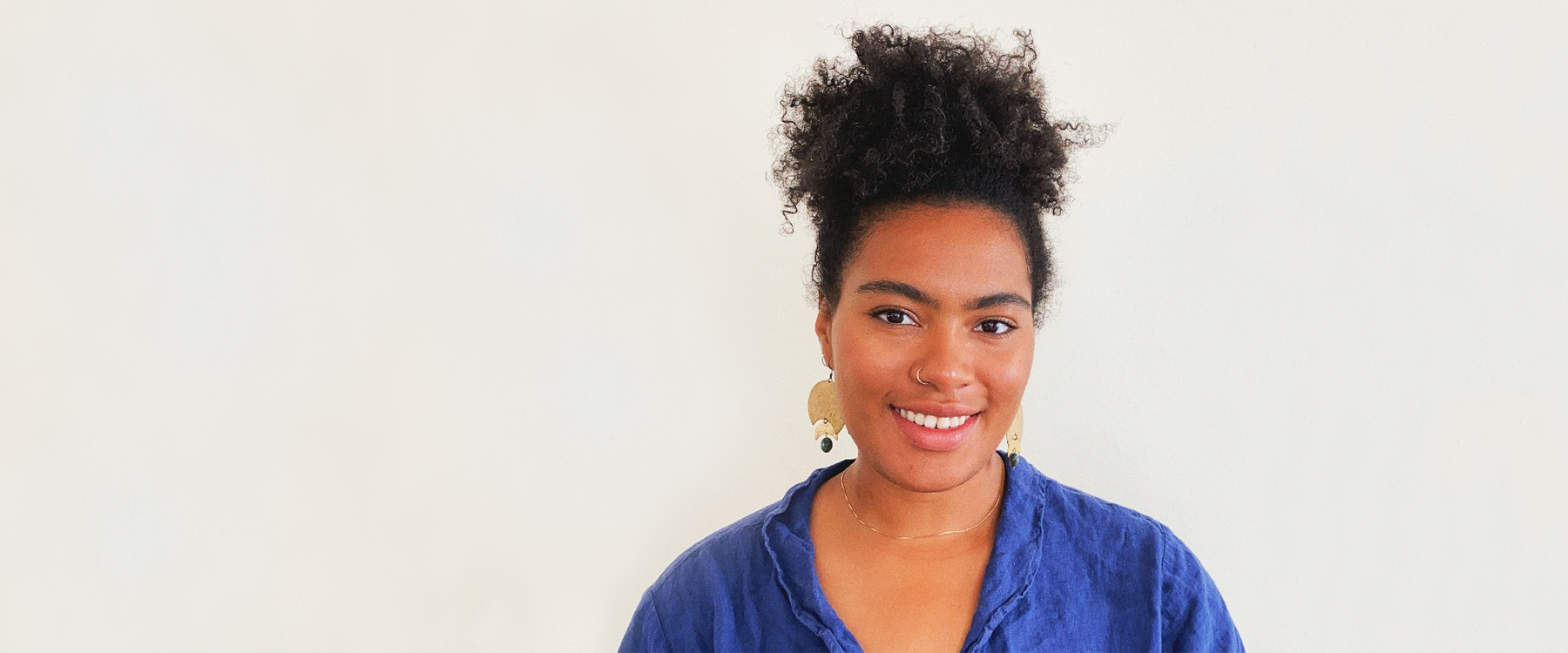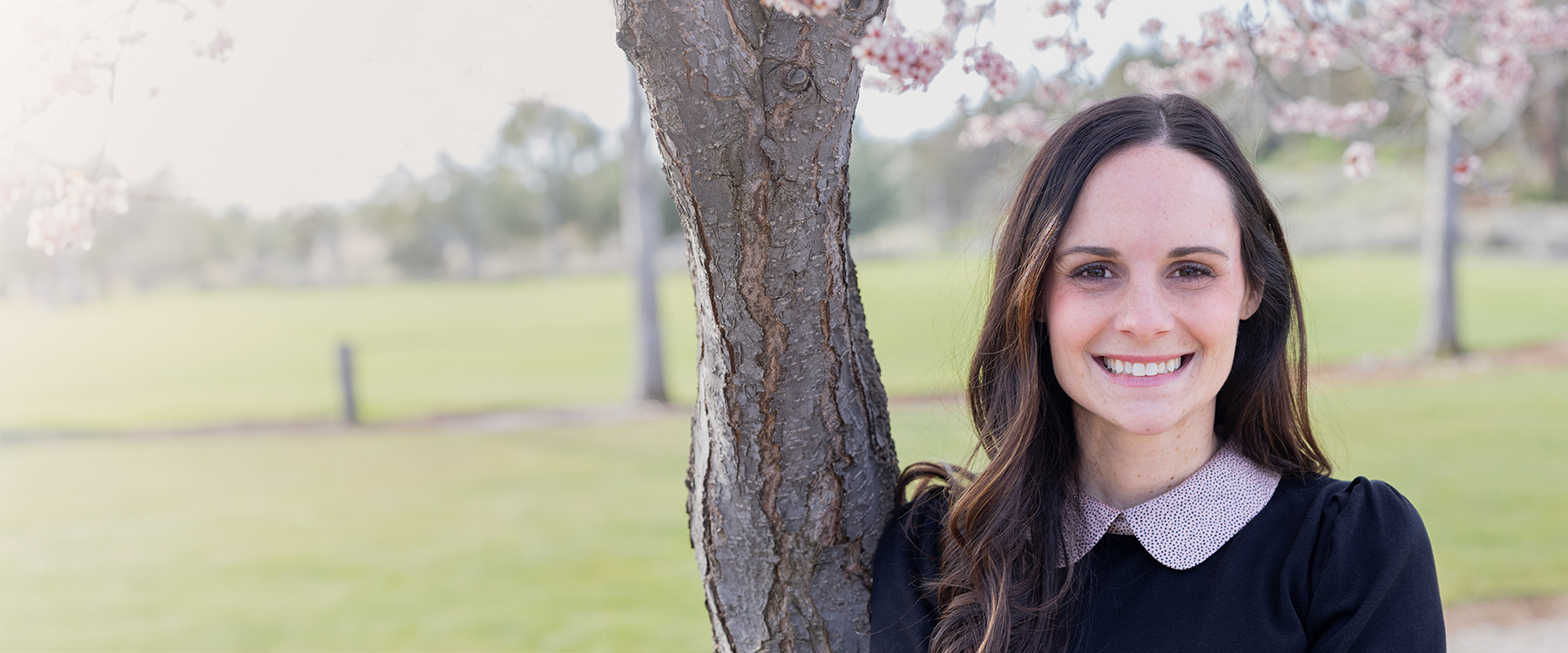By Josh Friesen
Arianna Griffin, B.S.N., D.N.P. ’25, RN, CNM, sensed it was time to speak up.
It was the middle of the night. Griffin, a midwifery student at OHSU, was halfway through a 24-hour call shift working alongside OHSU midwives on the labor and delivery unit. One of Griffin’s patients was having her second baby, and her labor was progressing very slowly — but not concerningly so. The patient had recently immigrated to Portland from Africa, where she had her first baby via cesarean section.
Some of the providers assumed the patient was going to need a C-section for her second birth, too.
“The midwife and I were laboring with her and were like, ‘We don’t think so. We think she still has time,’” Griffin recalled. “‘She and her baby are both looking good. She wants to continue this process, and we don’t really have any signs saying it’s dangerous.’ … She went on to have her baby four hours later. She had a vaginal birth. It was beautiful, uncomplicated. She did great.”
“I think that there’s still more to learn and this is kind of just like the starting point. I feel very lucky to have had such an extensive, hands-on experience through this program.”
Arianna Griffin, B.S.N., D.N.P. ’25, RN, CNM
For Griffin, the experience encapsulates her place as an advocate in a reproductive health care system that is still learning how to confront and dismantle its own systemic racism and implicit biases. With every birthing person she cares for and with every baby she delivers, Griffin strives to chip away at the foundation of health inequities that too often keep underserved populations from the birth experiences they desire.
“Everyone has their biases, right?” Griffin said. “But I think being aware of that — especially when people are vulnerable — is so needed.”
Griffin was raised in the small town of Eagle River, Alaska — a stone’s throw from the state’s largest city of Anchorage. Her dad was a medical technologist for the U.S. Air Force, so she grew up with an interest in health care. It wasn’t until she shadowed an OB-GYN in high school that she developed a calling toward pregnant people, babies and reproductive health care.
After high school, Griffin attended Seattle University and earned her undergraduate degree in nursing in 2016. She moved on to a labor and delivery residency program at EvergreenHealth before working as a clinic registered nurse alongside midwives at the University of Washington.
It didn’t take long before Griffin started thinking about going back to school for midwifery. Her husband was finishing law school in Seattle, and the two were seeking something different. Griffin was hired as a labor and delivery nurse at OHSU and saw firsthand what it would be like to be a midwifery student.
“Once I started working at OHSU, working with the nurses and midwives and seeing how passionate everyone was, it just kind of felt like the right thing,” she said.
Griffin continued working as a labor and delivery nurse throughout the three-year midwifery program. Though her obligations as a nurse and a student kept her busy, she was able to apply things she learned in one role and apply it to the other. She quickly felt supported by the faculty, staff and students as she developed her skills in both the clinic and the classroom.
Griffin was also supported by the Maternity Care Nursing Workforce Expansion (MatCare) Program via the Advancing Nurse-Midwifery Education to Improve Maternal and Rural Underserved Healthcare (RUSH) Grant. The grant, administered by the Health Resources and Services Administration’s (HRSA) Bureau of Health Workforce, aims to increase access to nursing programs and improve maternity and reproductive health care for underserved populations. Black maternal mortality rates are three to four times higher than white mortality rates, despite recent declines in overall maternal mortality rates in the United States.
“I really have a strong passion for working with marginalized people, people who are often misunderstood and rightfully have a distrust of the health care system,” she said. “I’m passionate about giving high-quality care to everyone.”
Whether or not the funding for the grant will continue to be available, however, remains to be seen.
“There’s a question about if this grant will continue with all the budget cuts the current administration is making,” Griffin said. “It’s a big question a lot of universities are probably facing about whether these funds are going to be accessible anymore. It’s incredibly unfortunate. I just feel lucky I was here at the right time.”
Griffin graduated with her D.N.P. in the spring of 2025. She looks forward to spending time off with her family before settling into a midwifery position somewhere nearby in the fall — taking what she learned from OHSU with her.
“I think my biggest takeaway is that it’s OK if you don’t feel 100 percent confident with something,” Griffin said. “Just trust that you have that innate knowledge. I think that there’s still more to learn and this is kind of just like the starting point. I feel very lucky to have had such an extensive, hands-on experience through this program. But I know I’m still going to be a new grad and a new midwife, and there’s going to be so much more to learn and experience. I’m excited to feel like I’m at the point where I’m ready to start that process.”




